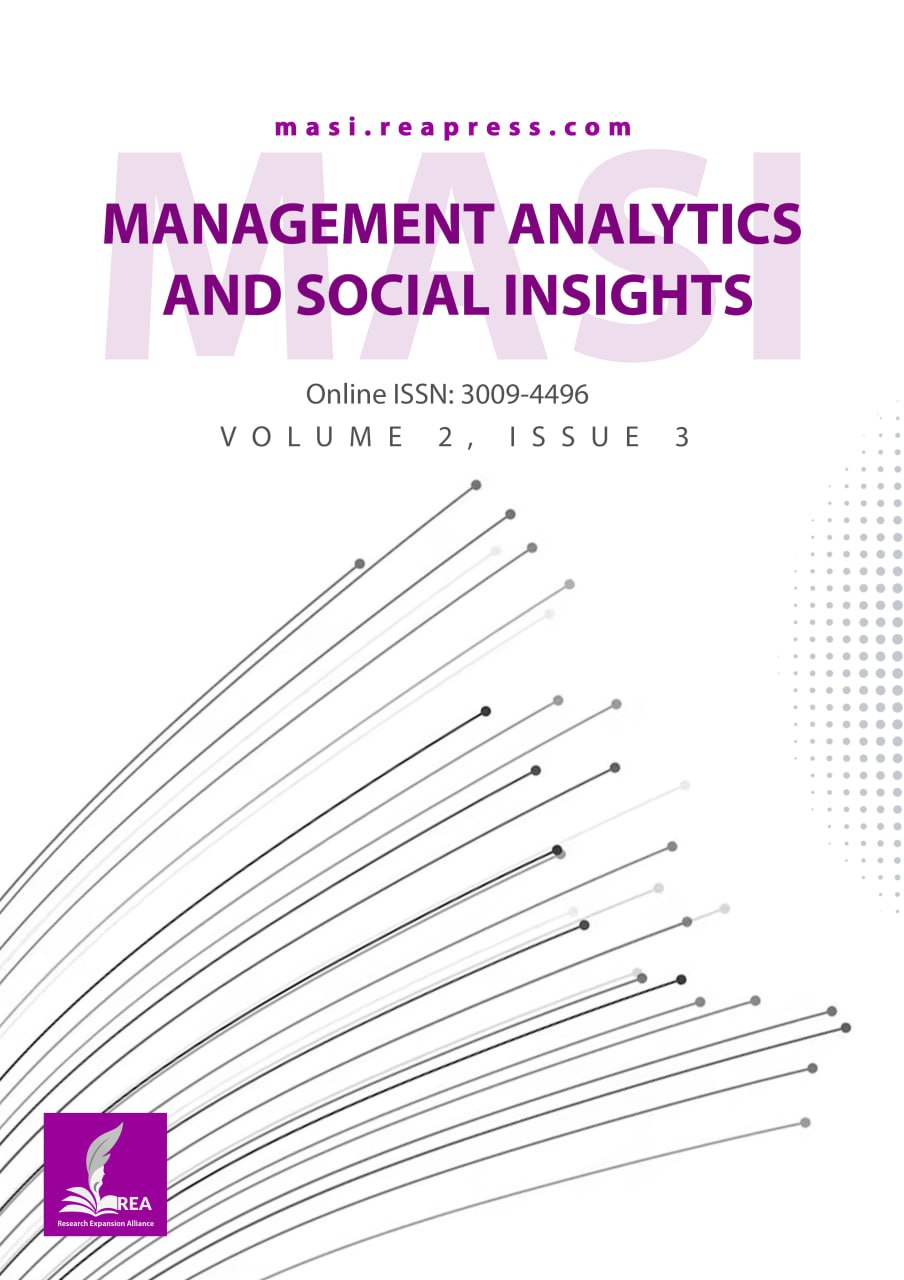Cybercrime and Cyber-Security in Nigeria
Abstract
Different activities, such as commercial, social, and human, among others, are afforded limitless options via the Global Information Infrastructure (GII). However, hackers are increasingly attacking the GII, and the frequency of these attacks raises concerns regarding their quantity, cost, and complexity. In order to explain the pertinent conditions and risks of cybercrime in Nigeria, this study aims to investigate the social and technological aspects of cybersecurity and cybercrime. The research used a theoretical and investigative approach to the problem of cybercrime. Structured interviews were targeted at law enforcement agents organizational organizations on cybersecurity. To comprehend the objectives and tactics of Nigerian cybercriminals and to explain their actions in light of current theories of crime, data collected through these study instruments were submitted to descriptive analysis and frequency counts. Four theories of crime were found to be influenced by Nigerian cybercrime: the technology enabled crime theory, the routine activity theory, the Marxian Theory, and the Structural Functionalism Theory. The examination of current legislation revealed that there are presently no provisions in Nigerian statutes that particularly address cybercrime.
Keywords:
Cybercrime, Cyber-security, Information, NigeriaReferences
- [1] Adeniran, A. O., Jadah, H. M., & Mohammed, N. H. (2020). Impact of information technology on strategic management in the banking sector of Iraq. Insights into regional development, 2(2), 592–601. https://dx.doi.org/10.9770/IRD.2020.2.2(7)
- [2] Brenner, S. (2007). Law in an era of smart technology. Oxford University Press. https://doi.org/10.1093/acprof:oso/9780195333480.001.0001
- [3] Longe, O. B., Chiemeke, S. C. (2008). Cyber crime and criminality in Nigeria: What roles are internet access points in playing? Journal of information technology impact, 9(3), 155–172. https://www.researchgate.net/deref/https%3A%2F%2Fwww.researchgate.net%2Fpublication%2F228876250_Criminal_Uses_of_Information_Communication_Technologies_in_Sub-Saharan_Africa_Trends_Concerns_and_Perspectives%3FenrichId%3Drgreq-1e01304b72b5b1f9a0cc601d6b3e6315-XXX%26enrichSource%3DY292ZXJQYWdlOzIyODg3NjI1MDtBUzoxMDIyOTg2OTI4ODI0MzZAMTQwMTQwMTMxNzQ1Mw%253D%253D%26el%3D1_x_2%26_esc%3DpublicationCoverPdf?_tp=eyJjb250ZXh0Ijp7ImZpcnN0UGFnZSI6InB1YmxpY2F0aW9uIiwicGFnZSI6InB1YmxpY2F0aW9uIn19
- [4] Adeniran, A. O., Onuajah, S. I., Adeniran, A. A., & Ogunmola, M. A. (2024). Implementing cloud-centric IoT transformations: Merits and demerits. Systemic analytics, 2(2), 174–187. https://doi.org/10.31181/sa22202422
- [5] Adeniran, A. O. (2018). Assessment of federal governments’ effort on looted assets recovery in nigeria as a means of fighting corruption and terrorism. Discovery, 54(276), 453–462. https://www.researchgate.net/publication/329453250_Assessment_of_federal_governments’_effort_on_looted_assets_recovery_in_Nigeria_as_a_mea
- [6] Adeniran, A. O., & Obembe, O. E. (2020). The significance of strategic management accounting on the performance of transport businesses in Nigeria. Insights into regional development, 2(3), 677–688. https://dx.doi.org/10.9770/ird.2020.2.3(5)
- [7] Aluko, M. (2004). 17 ways of stopping financial corruption in Nigeria. https://dawodu.com/aluko103.htm
- [8] Ullah, F., Ali, A., & Umar, Z. (2021). Understanding cybercrime and youth: A perception based approach. Pakistan journal of social research, 3(3), 130–136. https://pdfs.semanticscholar.org/529a/dc0cadf9741234f5a89c5dde7713c2368a86.pdf
- [9] Matthew, O. F. (2016). Sociological and technological factors that enhance cybercrime and cyber security in Nigeria. International journal of law and legal studies, 4(5), 207–216. https://www.internationalscholarsjournals.com/articles/sociological-and-technological-factors-that-enhance-cybercrime-and-cyber-security-in-nigeria.pdf
- [10] Yar, M. (2005). The Novelty of ‘cybercrime’ an assessment in light of routine activity theory. European journal of criminology, 2(4), 407–427. https://doi.org/10.1177/147737080556056
- [11] Smith, R., Grabosky, P., & Urbas, G. (2004). Cyber criminals on trial. Criminal justice matters, 58(1), 22–23. https://doi.org/10.1080/09627250408553240
- [12] Wall, D. (2003). Maintaining order and law on the internet David Wall. In Crime and the internet (p. 167). Routledge. https://doi.org/10.4324/9780203299180-14
- [13] Lastowka, F. G., & Hunter, D. (2004). Virtual crimes. New york law school law review, 49(1), 306–310. https://doi.org/10.18574/nyu/9780814739075.003.0009
- [14] Grabosky, P. N. (2017). Virtual criminality: Old wine in new bottles? In Cyberspace crime (pp. 75–81). Routledge. https://doi.org/10.1177/a017405
- [15] Cernomoreț, S., & Nastas, A. (2023). Comparative analysis of cybercrime in the criminal law system. Adjuris-International Academic Publishers. https://www.adjuris.ro/books/cacc/Comparative%20Analysis%20of%20Cybercrime%20in%20the%20Criminal%20Law%20System.pdf
- [16] Mann, D., & Sutton, M. (1998). Netcrime: More change in the organisation of thieving. British journal of criminology, 38(2), 201–229. https://irep.ntu.ac.uk/id/eprint/25206
- [17] Loader, B. D., & Thomas, D. (2013). Cybercrime: Law enforcement, security and surveillance in the information age. Routledge. https://doi.org/10.4324/9780203354643
- [18] Canada, S. (2002). Canadian community health survey cycle 1.2: Mental health and well-being. https://www150.statcan.gc.ca/n1/en/catalogue/82C0026
- [19] ka Mtuze, S., & Musoni, M. (2023). An overview of cybercrime law in South Africa. International cybersecurity law review, 4(3), 299–323. https://doi.org/10.1365/s43439-023-00089-8
- [20] Odumesi, J. O. (2014). Combating the menace of cybercrime. International journal of computer science and mobile computing, 3(6), 980–991. https://www.researchgate.net/profile/John-Odumesi/publication/263967391_Combating_the_Menace_of_Cybercrime/links/00b4953c7613e08fbd000000/Combating-the-Menace-of-Cybercrime.pdf
- [21] Khan, E. R. (1999). Developing the theoretical and conceptual framework. http:// journclasses.pbworks.com/f/theoretical+framewor.ppt
- [22] Merton, R. K. (1938). Social structure and anomie. American sociological review, 3(5), 672–682. https://doi.org/10.2307/2084686
- [23] Giddens, A. (2001). The scope of sociology. Politics & Social Sciences. https://www.amazon.com/Sociology-Anthony-Giddens/dp/0745623115
- [24] Bonger, W. A. (1916). Criminality and economic conditions. Boston: Little, Brown. https://books.google.com/books?hl=en&lr=lang_en&id=CMAtAAAAIAAJ&oi=fnd&pg=PR11&dq=Bonger,+W.+A.+(1916).+Criminality+and+economic+conditions&ots=ycwC3z1W-O&sig=iEbzGhhBX5gaqyLWzLDElqJPAR0
- [25] Cohen, L. E., & Felson, M. (1979). Social change and crime rate trends: A routine activity approach. American sociological review, 44(4), 588–608. https://doi.org/10.2307/2094589
- [26] Miller, J. (2013). Individual offending, routine activities, and activity settings: Revisiting the routine activity theory of general deviance. Journal of research in crime and delinquency, 50(3), 390–416. https://doi.org/10.1177/0022427811432641
- [27] McQuade, S. (2001). Technology-enabled crime, policing and security. Abingdon: Routledge. https://doi.org/10.21061/jots.v32i1.a.5
- [28] McQuade, S. C., & Wellford, C. F. (2006). Understanding and managing cybercrime. Pearson/Allyn and Bacon Boston. https://www.ojp.gov/ncjrs/virtual-library/abstracts/understanding-and-managing-cybercrime
- [29] Creswell, J. W., & Creswell, J. D. (2017). Research design: Qualitative, quantitative, and mixed methods approaches. Sage publications. https://spada.uns.ac.id/pluginfile.php/510378/mod_resource/content/1/creswell.pdf
- [30] Adeniran, A. O., Muraina, J. M., Ilugbami, J. O., & Adeniran, A. A. (2023). Government policy: Meaning, types, manifestations, theories, and policy cycles. Insights into regional development, 5(2), 83–99. http://doi.org/10.9770/IRD.2023.5.2(6)
- [31] Ehimen, O. R., & Bola, A. (2010). Cybercrime in Nigeria. Business intelligence journal, 3(1), 93–98. https://www.academia.edu/download/31076494/BIJ-Vol3No1.pdf#page=95
- [32] Ayofe, A. N., & Oluwaseyifunmitan, O. (2009). Approach to solving cybercrime and cybersecurity. (IJCSIS) International journal of computer science and information security, 3(1), 1–11. https://doi.org/10.48550/arXiv.0908.0099
- [33] Adeniran, A. O., & Olorunfemi, S. O. (2020). The essence of knowledge management in the air transportation sector. International journal of human capital in urban management, 5(2), 176–186. https://doi.org/10.22034/IJHCUM.2020.02.08
- [34] United Nations. (2005). UN recommendations on fighting cybercrime. http://www.crime-research.org/news/13.05.2005/1225/ 25th


